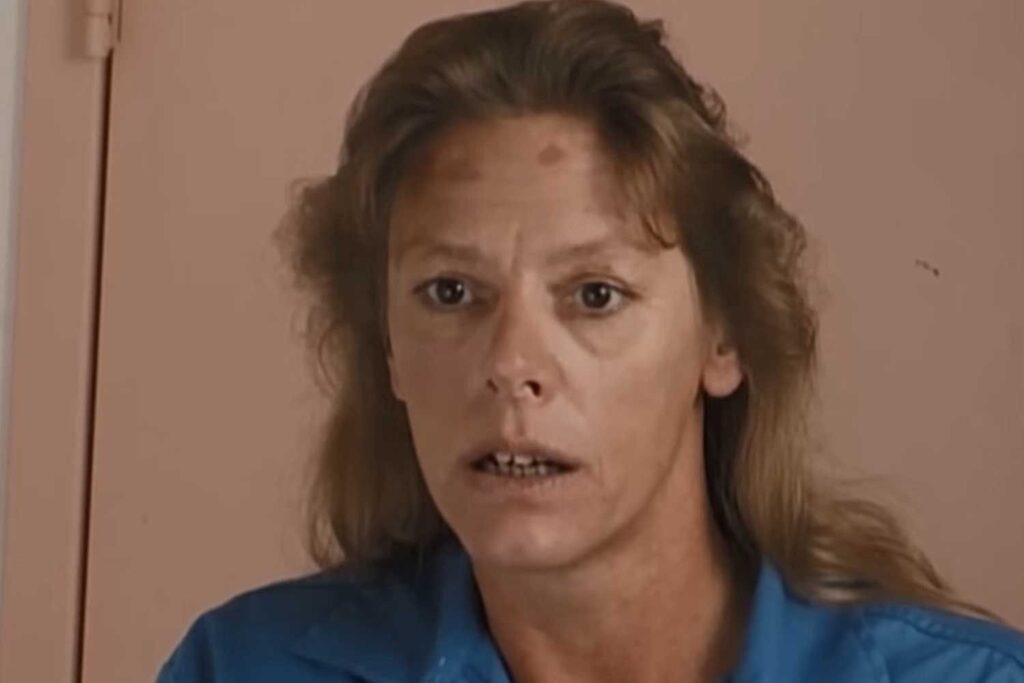NEED TO KNOW
Seven men were found shot and dumped off Florida highways between 1989 and 1990 — a spree that led investigators to a drifter named Aileen Wuornos, who claimed she had killed in self-defense. Her arrest outside a Port Orange bar marked the start of a case that gripped the nation, fueled by televised interviews, courtroom outbursts and a fascination with the idea of a sex worker who killed her clients.
Now, Netflix’s Aileen: Queen of the Serial Killers, which premiered Oct. 30, revisits the investigation and its aftermath through archival footage and a 1997 death-row interview of Wuornos by artist Jasmine Hirst, re-examining the life and legacy of one of the most infamous women ever executed in the United States.
Feb. 29, 1956 — Rochester, Mich.
Aileen Carol Wuornos was born on Feb. 29, 1956, in Rochester, Mich., per Encyclopaedia Britannica. Her father was later imprisoned for child sexual assault and died by suicide, her mother left soon after, and she and her brother were raised by their maternal grandparents.
At 14, Wuornos gave birth to a son who was placed for adoption, and she was soon pushed out of the home and began drifting and hitchhiking, per the Netflix documentary.
1986 — Aileen met Tyria Moore in Daytona Beach
Screenshot via YouTube
Wuornos said she and then-24-year-old Moore quickly became inseparable; the pair dated for four-and-a-half years, until Wuornos’ arrest.
“We never left each other except for when we worked,” she said. “I was a cook, I was cookin’ for Ty, I cleaned the place for Ty… I loved her so bad… The only reason I carried that darn gun is because I loved her so much. I wanted to make sure I got home alive, in one piece, so I’d be another day breathing with her,” Wuornos says in archival footage used in the documentary.
Dec. 13, 1989 — Richard Mallory found dead
Acey Harper/Getty
Electronics-store owner Richard Mallory, 51, picked up Wuornos near Daytona Beach in late November 1989.
His car was later found abandoned, and his body was discovered Dec. 13 in a wooded area. He had been shot multiple times with a .22-caliber weapon, according to court documents.
Wuornos later said Mallory raped her and that she shot him in self-defense, per archival interviews featured in the documentary.
Investigators tied her to Mallory using pawn-shop records and fingerprints after she sold his personal effects, according to court documents.
June 1, 1990 — Police recover body of David Spears
Peter Cosgrove/AP Photo
Spears, a 43-year-old construction worker, was found nude along U.S. 19 in Citrus County. He had been shot six times with a .22-caliber firearm, according to Florida Supreme Court records.
June 6, 1990 — Charles Carskaddon was found
Part-time rodeo worker Charles Carskaddon, 40, was discovered nude and decomposing in Pasco County — he had been shot eight times with a .22-caliber weapon, according to Florida Supreme Court records.
Wuornos pawned Carskaddon’s gun, per court records reviewed by PEOPLE. In archival footage featured in Aileen: Queen of the Serial Killers, Wuornos said she killed him after believing he was involved in drug smuggling.
July 4, 1990 — Peter Siems vanished; car crash yielded a composite sketch
Retired merchant seaman Peter Siems, 65, disappeared while driving from Jupiter, Fla., to Arkansas. Weeks later, witnesses saw two women crash and abandon his car in Volusia County.
A palm print on the door matched Wuornos, and a composite sketch of the women was distributed statewide, according to court documents and archival footage in the film.
Siems’ body was never found, and Wuornos was never convicted in his presumed death.
Aug. 4, 1990 — Troy Burress found dead
Lafayette/Kobal/Shutterstock
Burress, 50, a traveling sausage salesman from Ocala, was reported missing during his delivery route. His truck was found abandoned, and his body was later discovered with two gunshot wounds in the Ocala National Forest, according to court documents and reporting featured in the film.
Sept. 12, 1990 — Charles “Dick” Humphreys found shot
Humphreys, 56, a retired Air Force major and former police chief, was discovered along a Marion County road. He had been shot seven times with a .22-caliber firearm, according to Florida Supreme Court records.
Nov. 19, 1990 — Walter Gino Antonio became the final victim
Antonio, 61, a security guard and Brevard County reserve deputy, was found along a remote Dixie County road wearing only socks.
He had been shot four times — three in the back and one to the head — according to court documents.
Investigators also noted a paper dinner napkin found near his body and that Antonio used dentures that were missing, per court documents. He was engaged to be married when he died, according to his obituary.
Jan. 9, 1991 — Arrest at The Last Resort
Acey Harper/Getty
Wuornos was arrested outside The Last Resort, a biker-style dive bar where she was a regular, according to ClickOrlando.
Patrons helped lure her outside so undercover officers could move in, per the outlet. Archival footage used in Aileen: Queen of the Serial Killers shows her telling officers, “I want to know what the hell is going on here. I’d like to know why I’m being arrested, for what, for what warrant?”
Jan. 1991 — The taped calls with Tyria Moore
After her arrest, police arranged recorded phone calls between Moore and Wuornos.
On a Jan. 16 call, Moore said, “Lee, they’re coming after me,” and Wuornos replied, “I’m not gonna let you go to jail … If I have to confess everything just to keep you from getting in trouble, I will,” according to court documents and the documentary’s archival audio.
In a separate recorded call, cited in court documents, Wuornos said she killed her victims, “Because I fell so f——– in love with you that I was so worried about us not having an apartment and sh–… I was scared that we were going to lose our place… I know it sounds crazy but it’s the truth.”
Jan. 1992 — Mallory trial and first death sentence
Peter Bauer-USA TODAY NETWORK via Imagn Images
Wuornos was tried in Volusia County for Mallory’s murder. Prosecutors introduced pawn-shop receipts and fingerprint evidence linking her to Mallory’s property, according to court documents.
The documentary reports that Mallory had a 1957 conviction for assault with intent to rape and was once committed to a sexual-offender institution — information not presented to jurors at trial, per archival Dateline reporting used in the film.
March 1992 – February 1993 — Wuornos pleaded no contest and guilty in remaining cases
Over the next year, Wuornos entered no-contest and guilty pleas in several remaining murders and received additional death sentences, according to Florida Supreme Court records.
“I would really appreciate to be sent back to court immediately … I plead no contest and I meant that,” Wuornos told a judge at a 1992 no-contest hearing in Marion County, per the documentary. “It’s the end of the line… I don’t see why there should be a jury. I don’t see why this should carry on… I’ve been framed. I’ve been set up. I’m ready to die and get out of your evil.”
Her attorney Steve Glazer said during this period that his client wanted to “get this over as soon as possible,” per archival footage shown in the Netflix documentary.
July 20, 2001 — Post-conviction hearing
At a Volusia County hearing, Wuornos said, “I killed those men. I robbed them and I killed them as cold as ice. And I’d do it again too… There’s no chance in keeping me alive… ’Cause I’d kill again. I have hate crawling through my system,” according to the Associated Press.
Oct. 9, 2002 — Execution
Chris Livingston/Getty
Wuornos was executed by lethal injection at Florida State Prison at 9:47 a.m. Her final statement was: “Yes, I would just like to say I’m sailing with the Rock, and I’ll be back, like Independence Day, with Jesus — June 6. Like the movie, big mothership and all. I’ll be back. I’ll be back,” PEOPLE previously reported.
Aileen: Queen of the Serial Killers, a new Netflix documentary, began streaming Oct. 30.

